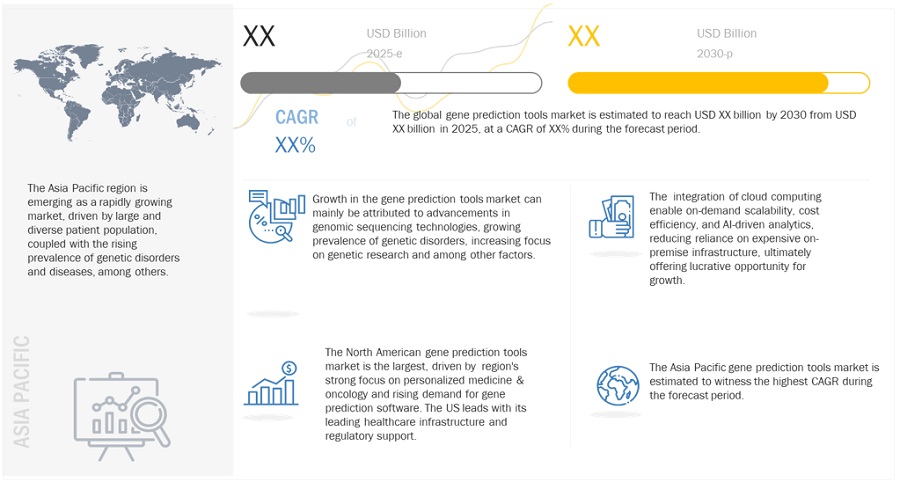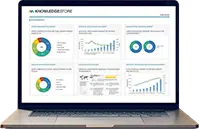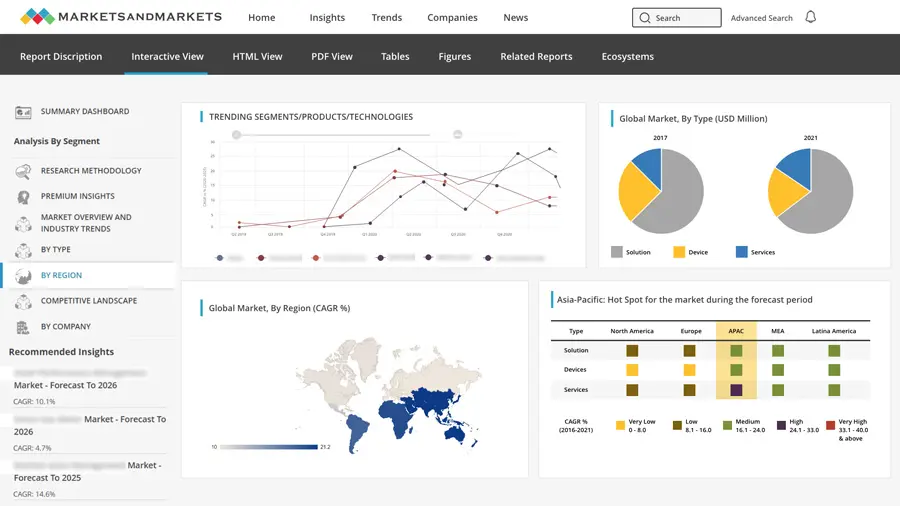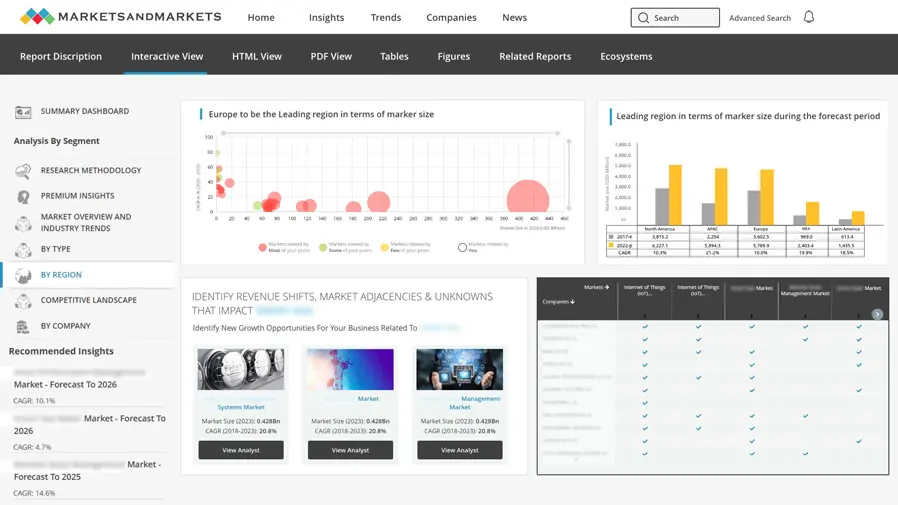Gene Prediction Tools Market - Global Forecast to 2030
Gene prediction tools are software platforms that are used to identify, annotate, and predict gene locations, structures, and functions within genomic data. These tools employs advanced algorithms, machine learning, and statistical models to analyze sequencing data, enabling accurate gene predictions and functional insights. The gene prediction tools market is mainly driven by factors such as advancements in genomic sequencing technologies such as Next-Generation Sequencing (NGS) and long-read sequencing and rising demand for personalized medicine and precision oncology. The growing prevalence of genetic disorders and the increasing focus on genetic research, particularly in drug discovery and biomarker identification, have further amplified the demand for accurate gene prediction.
ATTRACTIVE OPPORTUNITIES IN THE GENE PREDICTION TOOLS MARKET

Global Gene Prediction Tools Market Dynamics
DRIVER: Advancements in Genomic Technologies
The gene prediction tools market is witnessing a rapid evolution due to development of advanced, precise, scalable, and cost-effective platforms. The development of NGS platforms such as Illumina’s NovaSeq series, has significantly reduced sequencing costs while increasing throughput, accelerating large-scale genetic studies. Similarly, integration of artificial intelligence (AI) and machine learning (ML) into gene prediction software is further transforming the market. Solutions such as GeneMark, AUGUSTUS, and DeepGene leverage AI-driven algorithms to enhance gene annotation accuracy, supporting applications in precision medicine, oncology, and rare disease research. These technological advancements are pivotal in driving innovations in driving innovation across drug discovery, biomarker development, and gene-editing applications. For example, The Cancer Genome Atlas (TCGA) utilizes high-throughput sequencing and predictive modeling to identify disease-associated genetic variants, facilitating the development of targeted therapies. Likewise, CRISPR-based genome editing companies, including Editas Medicine and CRISPR Therapeutics, rely on sophisticated gene prediction tools to optimize gene-targeting strategies.
RESTRAINT: High Computational Costs & Complexity
Despite the promising advancements in gene prediction, its widespread adoption is hindered by high computational costs and data complexity, limiting accessibility for smaller research institutions and emerging biotech firms. Advanced gene prediction algorithms, particularly those leveraging AI, machine learning, and multi-omics analysis, require significant computing power, scalable cloud infrastructure, and high-performance storage solutions, driving up operational expenses.
The lack of standardization in gene prediction methodologies complicates data interpretation, necessitating extensive customization, validation, and regulatory compliance efforts. Thus, the high cost of computation and data complexity remain major barriers to market growth.
Recent Developments:
- In February 2024, the Australian Government invested USD 500.1 million in genomic research through its Genomics Health Futures Mission to enhance disease testing and diagnosis, provide personalized treatment options, and improve health outcomes while reducing unnecessary interventions and health costs
- In November 2024, the Department of Biotechnology (DBT) and the Biotechnology Research and Innovation Council (BRIC), in collaboration, launched the 'One Day One Genome' initiative to explore India's rich microbial diversity.
- In November 2022, DNASTAR (US) launched Lasergene 17.4. It features a large amount of additional functionality geared toward variant analysis for multiple sequence alignments.
- In September 2022, QIAGEN (Netherlands) and Neuron23 (US) entered into a collaboration agreement to develop a companion diagnostic for Neuron23’s brain penetrant leucine-rich repeat kinase (LRRK2) inhibitor for Parkinson’s disease.
To speak to our analyst for a discussion on the above findings, click Speak to Analyst
















Growth opportunities and latent adjacency in Gene Prediction Tools Market